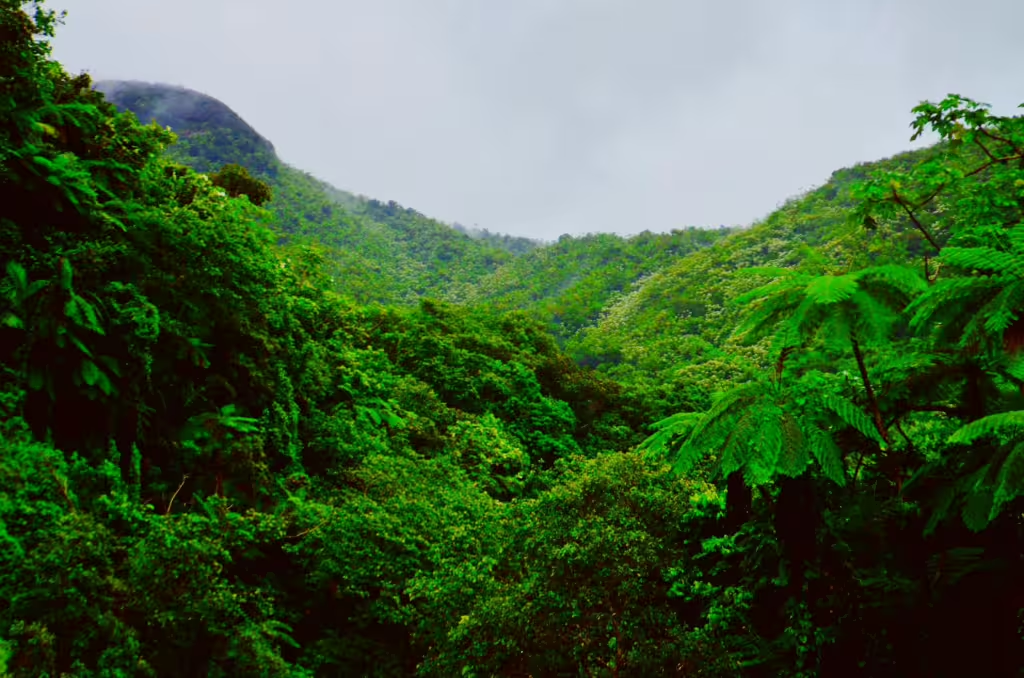Most of the time, our articles are focused on the present state of the Earth and the bleak future that we are desperately trying to prevent. Those concepts might seem unpleasant at first glance but they are of great significance to us here True Investigator. That said, every once and a while, we do like to switch gears, as it were. To that end, we are going to talk not about the future of different plant species on our world, but about those species that once dominated the planet’s past!
Prehistoric Earth would have been a thing to behold, especially for us. Not only were animals larger, stranger, and more dangerous than they were today, but the world beyond that, the verdant hues that make up the background in a hundred thousand pieces of paleoart, was something primeval and beyond mere imagination. The rich, green wilderness of ancient Earth was filled with all manner of weird, majestic plant species. Towering forests of giant ferns, cycads, horsetails, and lycophytes festooned the primordial countryside, making up the bulk of Earth’s first extensive terrestrial habitats.
These plants played a significant role in the formation of the ecosystems of today, shaping their environment and serving as the base of the food chain for many eons to come. Early plants influenced the climate, much as they do today, and were a significant part of soil formation. In essence, prehistoric plants influenced the very creatures that would eventually adapt their way up the evolutionary ladder into human beings.
In this article, we will discuss how certain species of prehistoric flora paved the path for the terrestrial lifeforms that followed in their wake. As we journey through time, we will uncover how plants have changed, how they have stayed the same, and how their very existence continues to affect all living things.

The Prehistoric World at Large
These ancient forests were a jungle…literally! The primordial forests of old were a tremendous riot of verdant growth that stretched for miles in every directions. Some of the earliest trees we know about were not even true trees, not in the modern sense anyway. These enormous plants were in fact giant, prehistoric relatives of ferns and club mosses. The only difference was that they didn’t grow as underbrush, they grew to remarkable heights — some exceeding 100 feet — and formed a thick canopy that kept much of the forest floor wreathed in shadow, humidity, and gloom. It was in this gloom that the competition for light first drove many plant species to develop more specialized structures, structures that enabled them to maximize their ability to photosynthesize despite their low-light conditions.
This rich vegetation wasn’t just for show, either, it provided food and complex habitats for a vast array of creatures. Insects, arachnids, and other invertebrates made their homes in the leaf litter and under the bark of these early trees. Meanwhile, larger species like the first amphibians and reptiles, roamed through the underbrush and meandered their way through swamps and root-infested mangroves. In short, the ancient jungles of Earth were rich, lively ecosystem made up of countless interconnected species, and each of those species depended on the plant life of the time in some way.
The influence of ancient flora extended beyond their role as primary producers for the other living things. The massive roots of these humungous plants anchored soil in place, reducing erosion and helping to form rich, deep sediments. Even dead plants served a purpose, for the decomposition of leaf litter and woody material contributed to the formation of extensive peat deposits. Over the ensuing millennia, those deposits were compressed into the vast seams of coal we find today; coal which affected the way our species inevitably improved our own society during the industrial age.
Furthermore, these plants released copious amounts of oxygen, which profoundly altered the air composition and climate of our world. Scientists believe that this significant rise in oxygen levels is what made it possible for larger and more complex creatures, such as dinosaurs, to evolve and flourish.
The Age of Giant Ferns and Lycophytes
We will begin our journey to the Land of the Lost with the Carboniferous Period, an epoch that occurred between 359 to 299 million years ago. At this time. Earth’s forests were filled with giant ferns and lycophytes. Some of these plants could grow over 100 feet tall, which made the entire area humid, green, and cloyingly full of oxygen. The most iconic of the trees found here were the scale trees, or Lepidodendron; these were the same giant relatives of club moss we spoke of earlier.
Whatever you call them, these floral titans provided a rich and abundant food base for a range of nearby creatures, from small insects to large amphibians. Moreover, the forests of the Carboniferous Period were so-named because of the key role they played in removing carbon dioxide from the atmosphere. The resultant oxygen they added helped shape the coming millennia.
Additionally, this is when coal deposits first began growing in the ground beneath our feet. The death of so many plants and animals helped create vast amounts of underground carbon, which we ended up using (rather recklessly, we might add) as fossil fuels.
The Rise of Cycads
Eventually, that period of time ended and other plants came into being. The next epoch is recognized as the Mesozoic Era, or the Age of the Dinosaurs. Paleobotanists refer to it as the Age of Cycads, however, and for good reason. This plant subspecies had tough, woody trunks and crown of stiff, leathery leaves, which many readers might recognize from old artwork depicting dinosaurs. Iconic as they were, cycads were also well adapted to a range of habitats and a rapidly changing climate. Herbivorous dinosaurs, such as stegosaurs and sauropods, relied on cycads and their seeds as a food source.
Part of what made cycads so versatile was their slow growth, which enabled them to survive dramatic climate fluctuations and upheavals; several of which occurred throughout the Mesozoic Era. Furthermore, the cycads’ ability to form symbiotic relationships with cyanobacteria allowed them to add nutrients to poor soils, essentially shaping future habitats and food chains.

Horsetails and Shoreline Ecology
The last species we will speak on are a type of giant horsetails, or Calamites, that grew in prehistoric swamps and floodplains. Reaching heights of up to 60 feet, these remarkable plants were an important part of those sodden ecosystems. This is due to the fact that they provided a rich source of food for small, terrestrial creatures, while simultaneously contributing to soil formation. This latter contribution was achieved through the horsetails’ extensive root systems.
Growing as they do in dense clusters, Calamites also offered protective habitats for a range of insects, small reptiles, and amphibians. Interestingly enough, the silica-rich tissues of horsetails made them somewhat unpalatable to many herbivores; they were simply too tough to chew on and digest. This adaptation, unique among plants for that time, allowed them to flourish in a range of conditions and create a unique ecological niche.

True Investigator Says…
As you can see, though they are long extinct, the prehistoric flora that once grew out of the primordial soup of early Earth were more than just backdrops for the dinosaurs — they were crucial to the development of our planet’s legendary biosphere. Without the majestic jungles of the past, our climate, soil, and food chain would look nothing like they do today, if indeed they even existed at all without plants to start the ball rolling. Life, as we know it, might have been profoundly different or it might not have been; there is no way of knowing. What we do know is that we need to appreciate the plants of the past and respect those of the present, so that we can continue to grow a new and brighter future for our world.
Discover more from TrueInvestigator
Subscribe to get the latest posts sent to your email.


